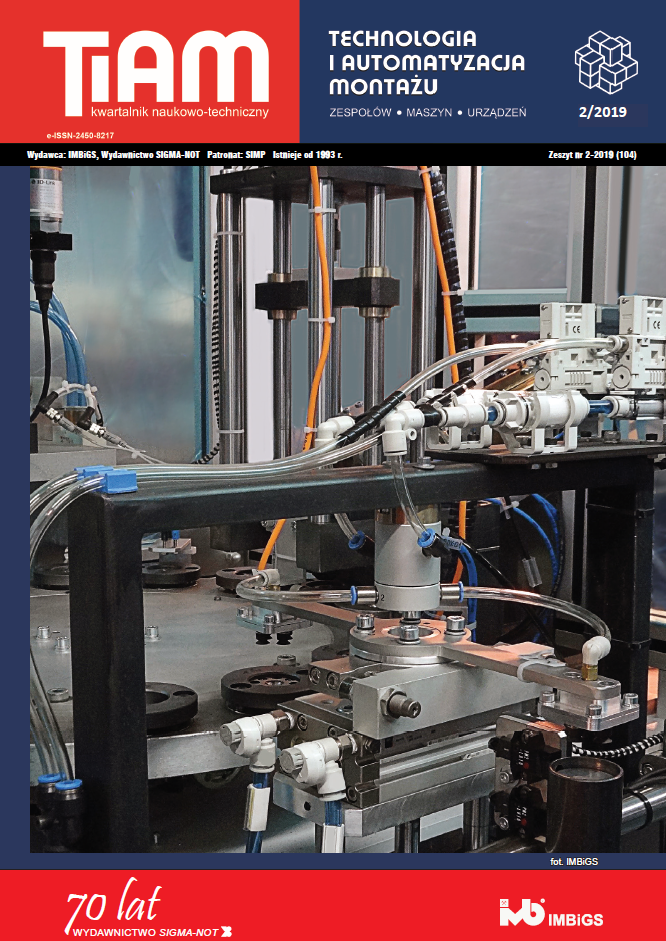Abstract
Controlling the operation of many devices (e.g. machine tools or assembly lines) requires that proper communication is ensured between man and the machine for the purpose of entering appropriate instructions that will control the machine operation. To this end, control panels, among other things, are used to enable the operator to control the device. Such panel may have many various forms; very often they are computer keyboards. The problem of correct entering appropriate instructions at the right moment by the operator certainly has an impact on the quality of the final product. Should the operator make a mistake, the product will not meet the desired requirements. It becomes necessary to design keyboards used as control panels in which the arrangement of characters would facilitate correct entering of instructions. One of the main issues is to define the most effective way, simultaneous or sequential, of using key while entering instructions from the control panel. The study presented in the paper describes the effect of using a combination of keys (i.e. simultaneous use of more than one key in order to enter a signal) in controlling a machine on the correctness of the signals being entered. The results presented were compared with using only the sequential pressing of keys. The study presented in the paper was conducted using a computer keyboard.
This is an Open Access article distributed under the terms of the Creative Commons Attribution License CC BY 4.0 (https://creativecommons.org/licenses/by/4.0/)
References
Dasgupta T. et. al. 2010. “Design and evaluation of Bangla keyboard layouts”. IEEE, Students' Technology Symposium (TechSym), p. 248-254.
Łapiński K., M. Peterlik, B. Wyżnikiewicz. 2015. „Wpływ robotyzacji na konkurencyjność polskich przedsiębiorstw”. Raport IBnGR, II edycja: Warszawa.
Fonseca L.M. 2015. “From Quality Gurus and TQM to ISO 9001: 2015: a review of several quality paths”. International Journal for Quality Research 9(1): 167-180.
Fonseca L.M. 2015. "From Quality Gurus and TQM to ISO 9001: 2015: a review of several quality paths." International Journal for Quality Research 9(1): 167-180.
Hiraga Y., Y. Ono. 1980. “An analysis of the standard English keyboard”. Association for Computational Linguistics, Proceedings of the 8th conference on Computational linguistics, p. 242-248.
Hughes D., J. Warren, O. Buyukkokten. 2002. “Empirical bi-action tables: A tool for the evaluation and optimization of text-input systems”. Application I: Stylus keyboards. Human–Computer Interaction, 17 (2-3): 271-309.
ISO/IEC 9995-2:2009. Information technology -Keyboard layouts for text and office systems - Part 2: Alphanumeric section.
Jastrzębski R., K. Nahlik. 2014. „Mistrz Klawiatury II”. Nahlik Soft. Źródło: http://www.nahliksoft.com.pl/phtml/p-mk2.html
Karat C.M. et. al. 1999. “Patterns of entry and correction in large vocabulary continuous speech recognition systems”. ACM, Proceedings of the SIGCHI conference on Human Factors in Computing Systems, p. 568-575.
Lee P., S. Zhai. 2004. “Top-down learning strategies: can they facilitate stylus keyboard learning?”. International Journal of human-computer studies, 60(5-6): 585-598.
Norman D.A., D. Fisher. 1982. “Why alphabetic keyboards are not easy to use: Keyboard layout doesn't much matter”. Human Factors, 24(5): 509-519.

